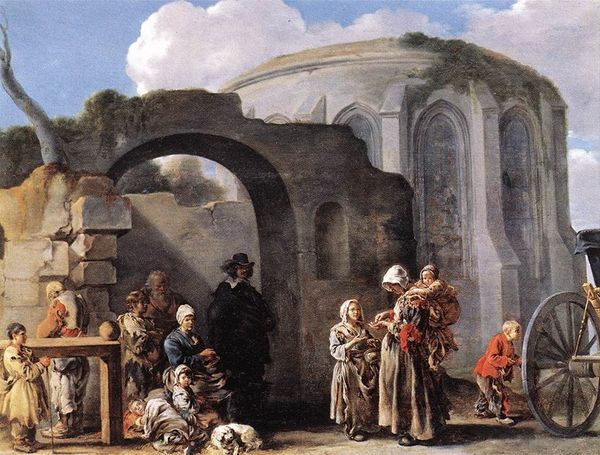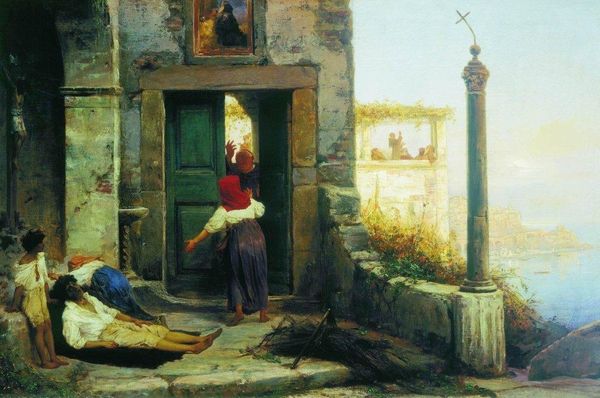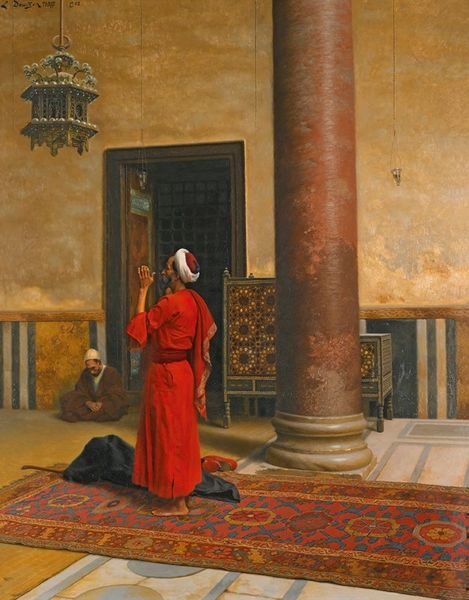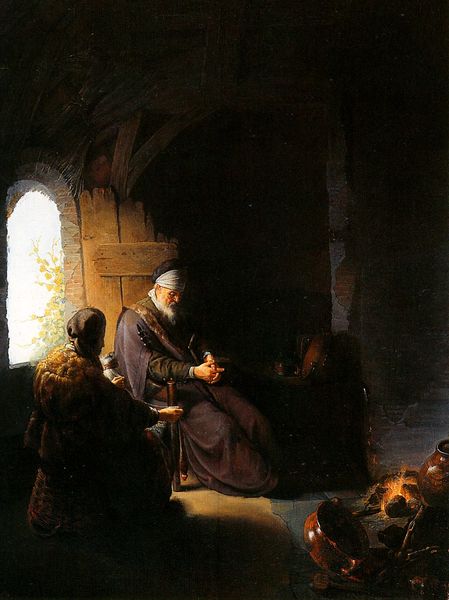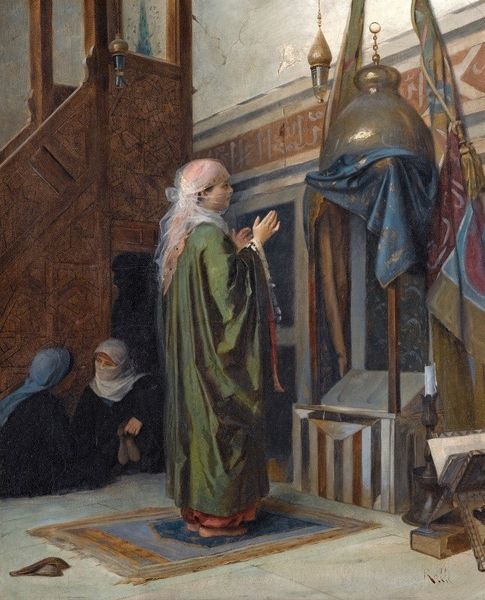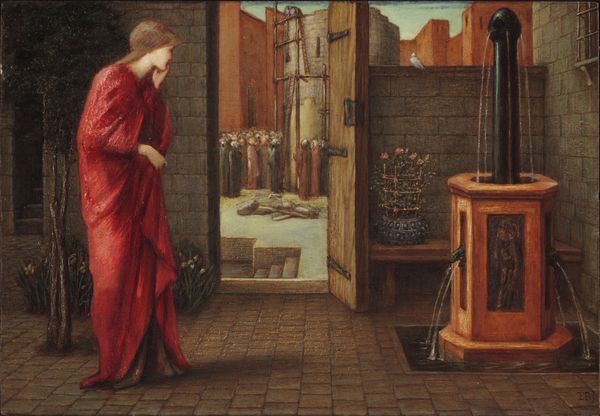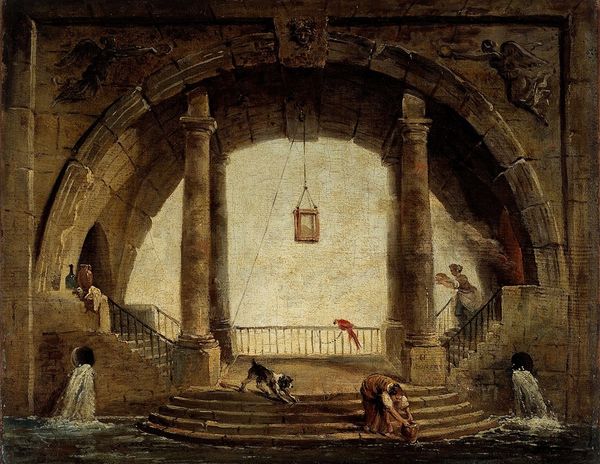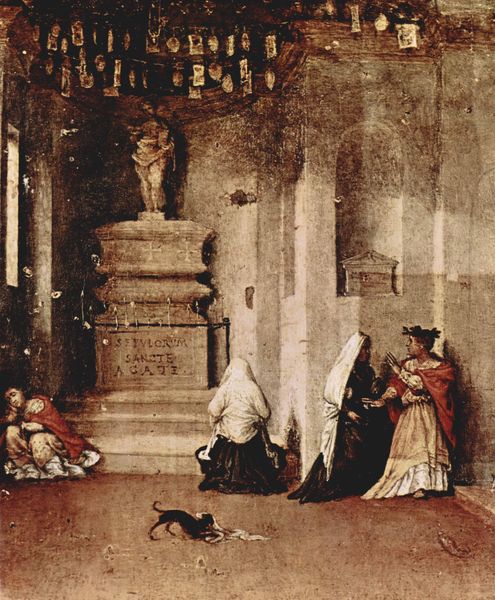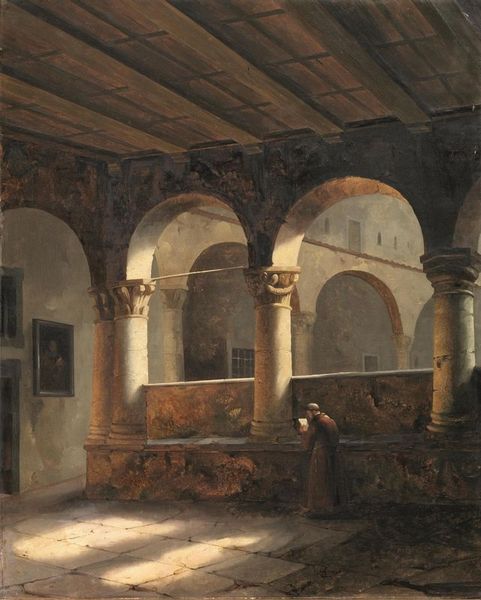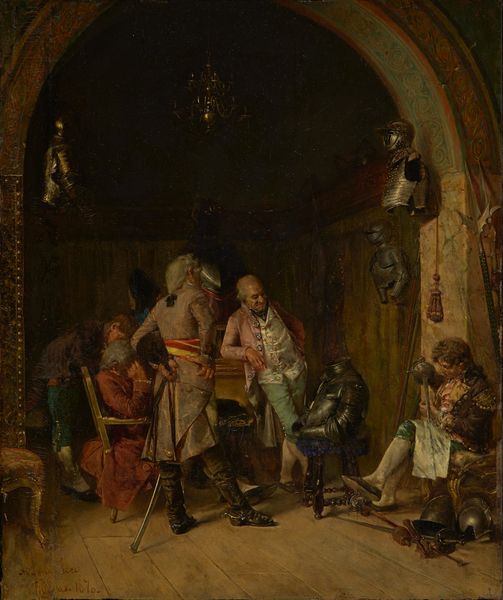
painting, oil-paint
painting
oil-paint
landscape
figuration
cultural heritage
traditional architecture
orientalism
genre-painting
academic-art
Copyright: Public domain
Curator: What a mesmerizing scene. The immediate impression is this hushed tranquility punctured by the flutter of wings. Editor: It really is captivating. We’re looking at a painting titled “Harem Women Feeding Pigeons in a Courtyard,” by Jean-Léon Gérôme. It’s an oil painting that typifies Orientalism within the broader framework of 19th-century academic art. Curator: Orientalism, yes. It’s impossible to ignore that layer. But my eye keeps drifting back to the pigeons themselves – how Gérôme captures their chaotic, shimmering movement against the static architecture. Almost feels like a metaphor... flight as freedom, perhaps? Or perhaps, even more deeply, pigeons used to transmit news… Are the pigeons being fed messages of love and reconciliation to places near and far? Editor: I appreciate that reading. What strikes me is the depiction of these women within a very specific power dynamic. The harem, often exoticized by Western artists like Gérôme, represented a space of both confinement and, paradoxically, female solidarity. These women, carefully arranged, become objects of the Western gaze, reinforcing stereotypes about Eastern femininity and domesticity. The architecture of this imagined Orient, beautiful but confining, furthers this interpretation. Curator: Fair enough! But I still see something compelling beyond that gaze. Look at the painterly detail – the way he renders the fabric, the light on the tiles… I see dedication, and perhaps a flicker of respect buried beneath the politics of the era. A beautiful cage is still a cage but it doesn't have to be cruel... Does it? Is there dignity and beauty here despite everything else? Editor: Gérôme was undeniably a skilled technician and draftsman, creating a plausible three-dimensional sense of form, so in the painting there's no attempt to obscure his process or the details he renders with great sensitivity. However, his gaze, even if tempered by skill, carries the weight of colonial discourse. Seeing only beauty risks overlooking the inherent power imbalances represented, thus minimizing its true impact. The risk is, by only seeing beauty, we are just missing the larger truths that are being told by history. Curator: Perhaps it is true that every observation in a hall of mirrors depends where you stand, after all! Editor: Absolutely. The art makes space for beauty and dignity, even inside oppression and misrepresentation.
Comments
No comments
Be the first to comment and join the conversation on the ultimate creative platform.
